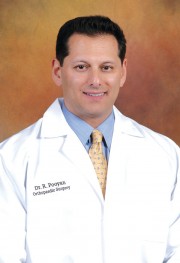
Dr. Ramin Pooyan
We often don’t think about how much we use our hands until symptoms of arthritis start to affect them. The activities we enjoyed become challenging or even impossible. Hand arthritis imposes limitations on those afflicted. According to the Center for Disease Control, of the nearly 50 million Americans with arthritis, about 2 million say that arthritis limits their ability to grasp small objects, and about 3 million report difficulties lifting or carrying anything over 10 lbs.
You’ll probably never notice the 19 bones in each hand, the 8 small bones that form the wrist, or the two forearm bones – until they start to hurt. Arthritis literally means “inflamed joint.” A joint consists of two smooth, cartilage-covered bone surfaces that fit together as a matched set and move smoothly against one other. Arthritis results when these smooth surfaces become irregular and don’t fit together well anymore and essentially “wear out.”
Any joint in the body may be affected by arthritis, and it can be most noticeable when it appears in hands and fingers. Common forms of arthritis in the hand are osteoarthritis, post-traumatic arthritis (after an injury), and rheumatoid arthritis. Other causes of arthritis of the hand are infection, gout and psoriasis.
Recognizing Symptoms
Women are more likely than men to have arthritis in their hands. People often experience symptoms in their hands before other signs of arthritis show up. Different forms of arthritis affect the hands in different ways. For example, psoriatic arthritis, a type of arthritis related to the skin condition psoriasis, is most likely to cause pain in the joints closest to the fingernails (the distal joints.) In osteoarthritis, the most common form of arthritis, cartilage wears down in finger and thumb joints. Symptoms of arthritis in the hands may include:
- Pain in some or all of the joints, including joints of the fingers, wrists, and thumbs
- The growth of bony knobs on finger joints
- Swollen, red or warm joints
- “Grinding” sensation with movement of the joints
- Stiffness in the fingers, especially in the morning in patients who have rheumatoid arthritis
- Growth of lumps, or nodules, under the skin of the hands in patients with rheumatoid arthritis
- Fingers that look like “swollen sausages” in patients with psoriatic arthritis
- Difficulty with motions that require gripping and twisting
The progression of hand arthritis can be measured. With rheumatoid arthritis (RA) and psoriatic arthritis, patients lose bone density, which is measurable with bone-density scanning. The joint damage of osteoarthritis can usually be seen on X-rays.
Treatment
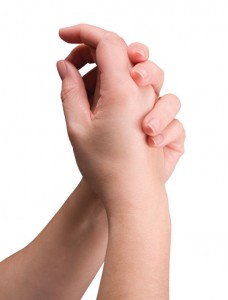 While there is no cure, treatment is designed to relieve pain and restore function. If you suffer symptoms of hand arthritis, it is important to keep both your hands and body active. Anti-inflammatory or other analgesic medication may be of benefit in relieving pain. Brief periods of rest may help if the arthritis has flared up. You may also be advised to wear finger or wrist splints at night and for selected activities. Heat modalities might be helpful for pain, but when severe swelling is present, cold therapies are recommended. A cortisone injection can often provide relief of symptoms. If these more conservative treatments fail, surgery may be an option.
While there is no cure, treatment is designed to relieve pain and restore function. If you suffer symptoms of hand arthritis, it is important to keep both your hands and body active. Anti-inflammatory or other analgesic medication may be of benefit in relieving pain. Brief periods of rest may help if the arthritis has flared up. You may also be advised to wear finger or wrist splints at night and for selected activities. Heat modalities might be helpful for pain, but when severe swelling is present, cold therapies are recommended. A cortisone injection can often provide relief of symptoms. If these more conservative treatments fail, surgery may be an option.
“Because of the constant reliance on our hands, pain and stiffness associated with arthritis is especially disruptive to our daily lives,” said Dr. Ramin Pooyan, an orthopedic surgeon at Desert Regional Medical Center who specializes in hand and upper extremity disorders. “Surgical intervention may provide pain relief and help improve function when more conservative treatments are unsuccessful.”
The goal of surgery is to restore as much function as possible and to eliminate the pain or reduce it to a tolerable level. According to Dr. Pooyan, some of the common surgical procedures performed for hand and wrist arthritis include joint fusion, joint reconstruction or replacement, and tendon interposition arthroplasty.
With joint fusion, the arthritic surface is removed and the bones on each side of the joint are fused together. This eliminates motion from the problem joint, but can relieve pain and correct deformities that interfere with functioning. With joint reconstruction, the degenerated joint surface is removed in order to eliminate the rough, irregular bone-to-bone contact that causes pain and restricts motion. Once the degenerated portion is removed, it may be replaced with a joint replacement implant. With tendon interposition arthroplasty, once the degenerated joint surface is removed it is augmented with tendon obtained from the patient.
Which type of surgery is used depends on the particular joint(s) involved, your activities and individual needs. Your hand surgeon can help you decide which type of surgery is most appropriate for you. “There are exciting new technologies and implants available for the surgical treatment of hand and wrist arthritis,” adds Dr. Pooyan. “These allow for faster healing after surgery, and earlier mobilization and functional recovery.”
Desert Regional’s ICON offers a full continuum of coordinated, multidisciplinary care. The Institute brings advanced comprehensive orthopedics and neuroscience services, from diagnosis to outcome, under the direction of specially trained, board certified physicians. For more information call 760.416.4511 or visit www.desertregionalicon.com.
Resources: 1) American Society for Surgery of the Hand. www.assh.org; 2) Center for Disease Control. www.cdc.gov







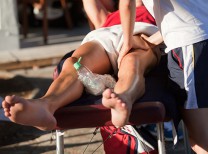

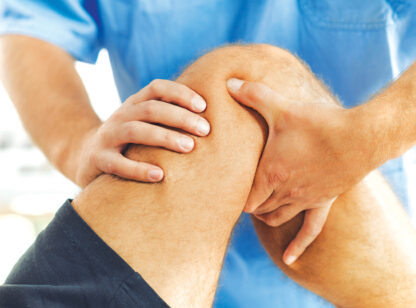
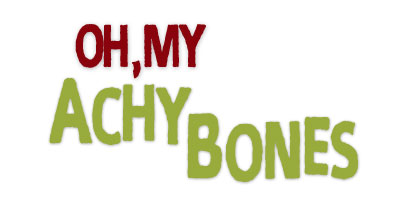






























Comments (1)
If the joints are damaged then there is no other alternative other than joint fusion. After joint fusion it enables the joint bear the weight thereby reducing the pain. Also age matters in such surgery, the more the age the more is the possibility of risks.